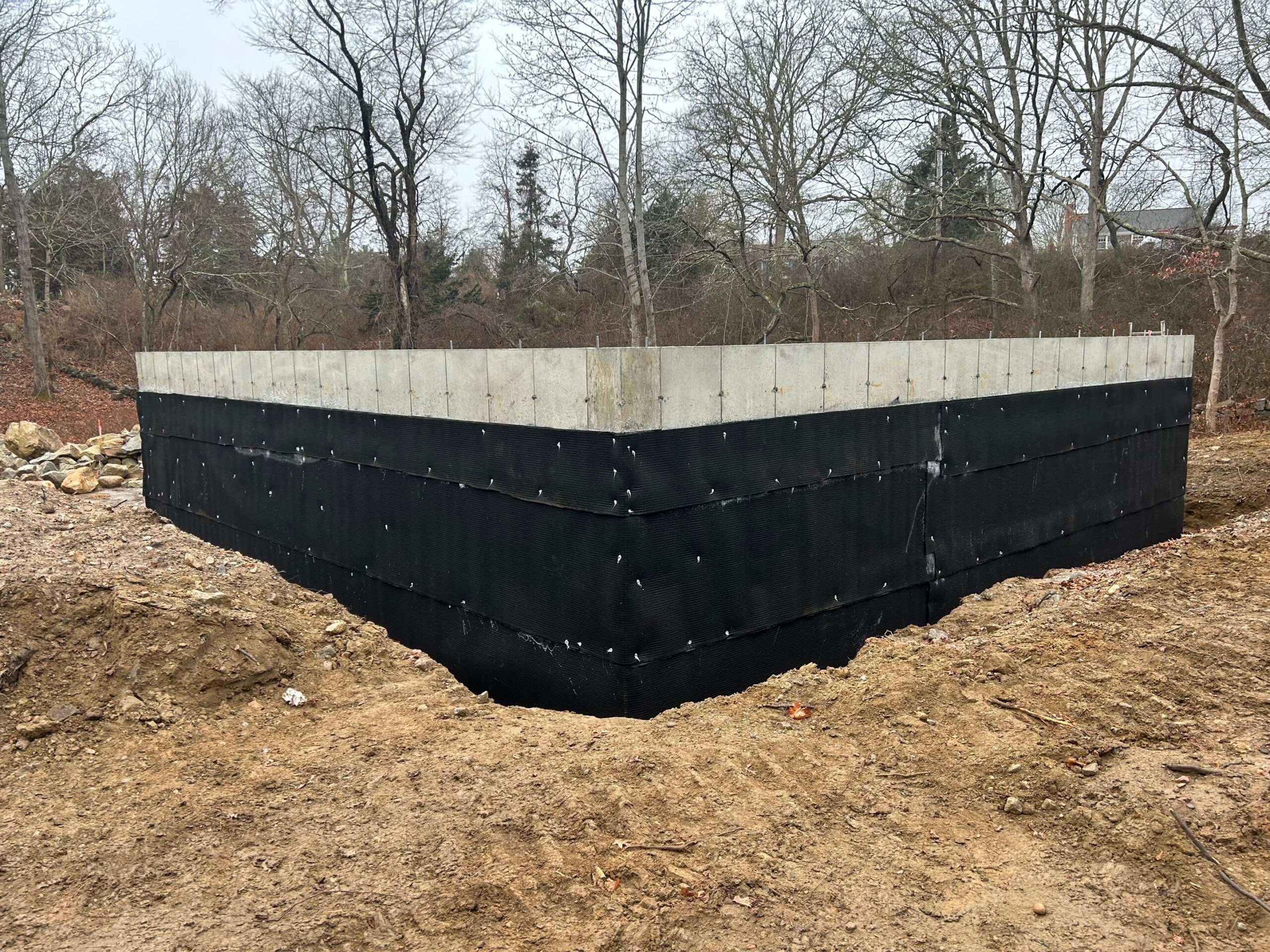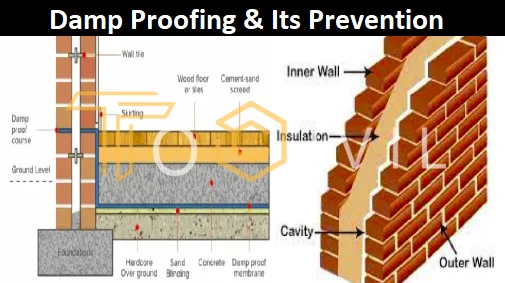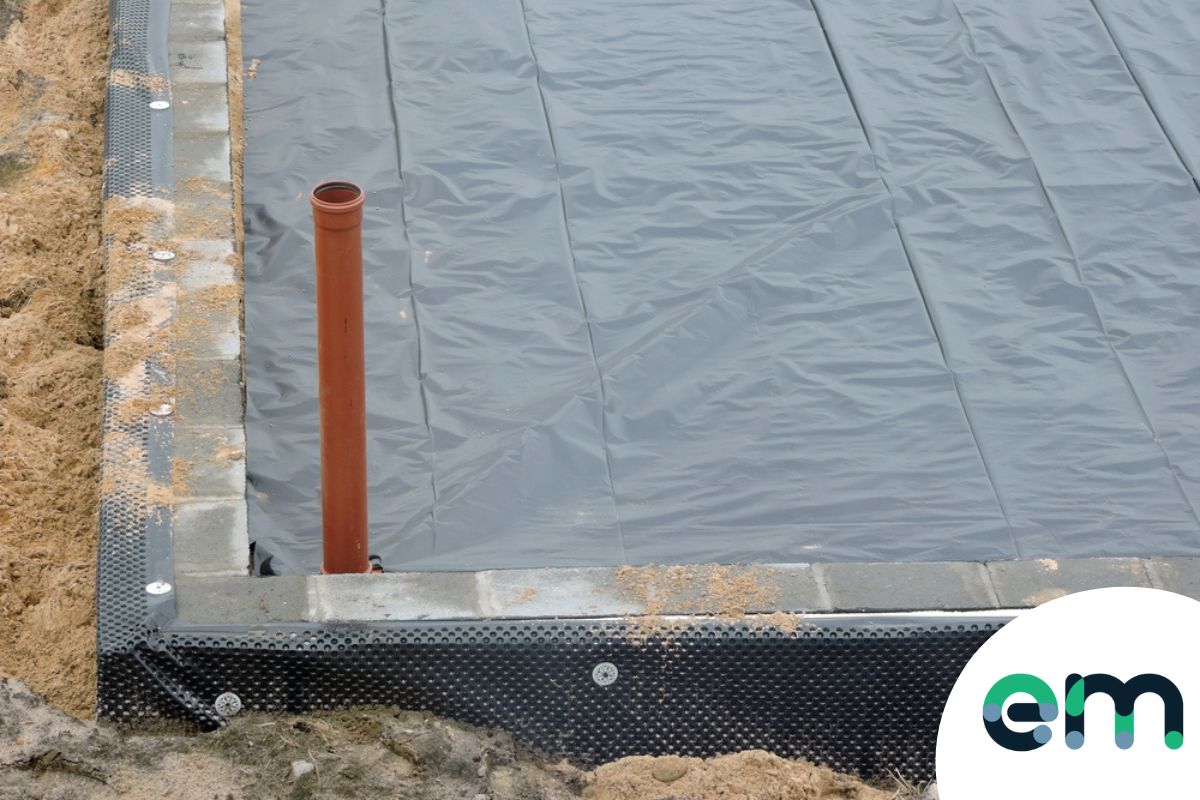Five crucial causes of penetrating damp and how mould removal newcastle can help
Five crucial causes of penetrating damp and how mould removal newcastle can help
Blog Article
Exploring the Various Strategies and Solutions for Effective Damp Proofing
Moisture in buildings poses substantial difficulties to both structural integrity and interior air high quality. Different techniques and remedies have emerged to combat this prevalent issue. From standard damp-proof membranes to innovative chemical treatments, each approach provides special advantages. Understanding these alternatives is crucial for reliable dampness control. However, choosing the right option relies on certain structure problems and requirements, triggering further exploration into one of the most effective wet proofing techniques readily available.
Understanding the Reasons For Wetness
Wetness can develop from different sources, understanding these reasons is crucial for effective removal. Commonly, moisture stems from three key resources: rising damp, passing through damp, and condensation. Increasing damp occurs when groundwater takes a trip up-wards through porous materials, such as block or rock, commonly due to an absence of an efficient barrier (damp specialist newcastle). Permeating damp is typically triggered by outside aspects, consisting of roofing system leakages, defective gutters, or harmed walls, allowing water to infiltrate a residential or commercial property. Condensation, on the various other hand, results from excess wetness airborne, typically intensified by poor air flow and temperature differences, leading to water beads forming on surfaces. Identifying these underlying concerns is necessary, as each kind of moisture requires a customized approach for removal. Correct analysis helps in establishing the most reliable services, inevitably securing the architectural integrity of a building and boosting indoor air top quality
Standard Damp-Proof Membranes

Chemical Damp-Proofing Solutions
Chemical damp-proofing solutions provide a cutting-edge technique to preventing moisture intrusion in buildings. These methods generally entail the application of liquid chemicals that permeate masonry and develop an obstacle against climbing moist. Frequently made use of chemicals consist of silanes, siloxanes, and other water-repellent representatives that respond with surface materials to develop a hydrophobic layer.The application procedure typically needs exploration holes into the walls, infusing the chemical solution, and enabling it to cure. This method is specifically helpful for older structures where traditional damp-proof membranes may be impractical. Furthermore, chemical damp-proofing can be much less disruptive and a lot more cost-effective than substantial improvement projects.While efficient, these services depend upon appropriate application and ecological problems for peak performance. Normal maintenance and monitoring are important to guarantee the long life of the damp-proofing therapy. Overall, chemical damp-proofing stands for a flexible alternative for guarding buildings versus moisture-related damage
Dental Caries Wall Building And Construction Methods
Dental caries wall construction methods supply various advantages, particularly in moisture control and power performance. By integrating an air void between 2 layers of stonework, these walls successfully reduce water ingress while enhancing insulation. This mix not only protects structures from moisture but additionally adds to lowered energy consumption.
Benefits of Tooth Cavity Wall Surfaces
When thinking about effective damp proofing approaches, the benefits of cavity wall surfaces stand apart plainly. Tooth cavity wall surfaces contain 2 different layers, developing an air gap that properly decreases wetness penetration. This layout decreases the risk of dampness, as the external wall functions as an obstacle versus rain and water access. Furthermore, dental caries wall surfaces enhance thermal insulation, which adds to energy performance by reducing warm loss. They likewise provide sound insulation, aiding to develop a quieter interior atmosphere. In addition, the air gap permits air flow, which aids in dampness control and reduces the possibility of mold development. These advantages not just enhance the general comfort of a building however also contribute to its longevity and architectural stability.
Wetness Control Strategies
Reliable wetness control approaches are critical in tooth cavity wall building to assure long-lasting protection against wetness. One primary technique entails the incorporation of weep openings, which help with water drainage from the cavity, avoiding accumulation. Additionally, using breathable membrane layers can assist manage moisture levels while permitting trapped vapor to run away. Correct placement of insulation is additionally essential, as it must not obstruct water drainage courses. Making certain that the outer leaves of the cavity wall surface are created with waterproof materials boosts general toughness. Routine upkeep checks are important to identify any kind of clogs or damage early, protecting the structure's integrity. Inevitably, a mix of these methods creates a durable defense against wetness intrusion in dental caries walls.
Insulation and Power Performance
Insulation plays an essential role in boosting energy effectiveness within tooth cavity wall building. By incorporating insulating materials, these wall surfaces develop a thermal barrier that lessens heat loss and decreases power consumption. Efficient insulation not only assists preserve a steady interior temperature yet additionally reduces the risk of wetness, as it prevents condensation within the wall tooth cavity. Various techniques, such as making use of inflexible foam boards or mineral wool, can be used to attain optimal insulation performance. Furthermore, correct installation is important to assure that gaps and voids are minimized, which can or else jeopardize energy performance. Eventually, a well-insulated cavity wall surface adds substantially to total sustainability and reduces home heating and cooling costs for house owners.
Outside Damp Proofing Techniques
Outside moist proofing techniques are necessary for safeguarding structures from moisture seepage. Two reliable strategies include the application of waterproof membranes and the setup of French drains. These remedies assist minimize water build-up and preserve the integrity of buildings.
Waterproof Membrane Layer Application
While various methods exist for protecting against wetness access, the application of waterproof membrane layers remains a very effective outside wet proofing method. These membranes are usually made from materials such as polyethylene, rubber, or modified asphalt, providing a durable obstacle against water penetration. The setup procedure entails applying the membrane to the exterior surfaces of walls or foundations, ensuring total protection to avoid leakages. Correct bond and sealing at joints are essential to optimizing performance. Water resistant membranes can be applied in various types, consisting of fluid layers and sheet membrane layers, enabling for flexibility based on the certain needs of the framework. This technique not only safeguards buildings from moisture but also boosts their long life and architectural integrity.
French Drain Installation
One efficient approach for taking care of groundwater and avoiding moisture buildup around a structure's structure is the installation of a French drainpipe. This drain system includes a trench full of gravel and a perforated pipe that reroutes surface area water far from the structure. Appropriate installment requires mindful planning, ensuring that the drain slopes far from the framework to promote suitable water flow. Furthermore, the place of the drainpipe is essential; it ought to be placed in locations prone to pooling or excess dampness. Regular upkeep, consisting of cleaning debris from the gravel and ensuring the pipe continues to be unhampered, is necessary for long-lasting performance. Ultimately, a well-installed French drain can considerably minimize the risk of water-related concerns in cellars and foundations.
Inside Waterproofing Approaches
Interior waterproofing techniques are crucial for safeguarding a structure's inside from wetness seepage and possible water damages. These methods normally include the application of specific products and techniques designed to create a moisture obstacle within the structure. One common approach is the usage of water resistant coatings or sealants on walls and floorings, which prevent dampness from penetrating surfaces.Additionally, setting up indoor drain systems, such as sump pumps, can efficiently manage water build-up in basements and creep areas. An additional method includes using vapor obstacles, which are installed to hinder dampness motion from the ground into living spaces.Moreover, dealing with any kind of fractures or gaps in wall surfaces or foundations with proper sealants ensures a comprehensive defense versus water invasion. By carrying out these interior waterproofing techniques, building owners can significantly minimize the threat of mold and mildew development, structural damages, and other moisture-related issues. Proper execution of these methods is necessary for long-lasting security and building integrity.
Normal Upkeep and Evaluation Practices
Regular maintenance and examination techniques are essential for ensuring the long-lasting efficiency of moist proofing solutions in any type of building. Regular checks make it possible for building owners to recognize very early indicators of moisture intrusion, such as peeling paint, mold development, and musty smells. These indicators can signal underlying concerns that need prompt attention.Inspections ought to be performed at the very least yearly, concentrating on susceptible locations like basements, creep areas, and outside walls. Throughout these evaluations, homeowner need to analyze sealers, drainage systems, and ventilation to validate they work correctly.Additionally, maintaining downspouts and gutters is necessary, as blocked systems can bring about water buildup near the foundation. Applying a routine maintenance routine, in addition to prompt repair services, can substantially extend the lifespan of wet proofing procedures and safeguard the architectural integrity of the building. Proactive actions inevitably add to the general health and security of the living setting.
Frequently Asked Questions
For How Long Does Damp Proofing Generally Last?
The period of damp proofing effectiveness differs, usually lasting between 20 to 50 years. Elements such as application top quality, ecological conditions, and maintenance techniques significantly influence the long life of the damp proofing therapy.

Can I Damp Proof My Home Myself?
The specific considered the feasibility of do it yourself damp proofing. With proper research and the best products, it is possible. They additionally recognized the significance of specialist support to guarantee durable effectiveness and prevent future issues.
What Are the Indications of Ineffective Damp Proofing?
Indications of inadequate moist proofing include persistent mildewy odors, visible mold growth, peeling off paint, damp patches on wall surfaces, and wood degeneration - damp proofing newcastle. House owners should deal with these problems promptly to stop more damage and health problems
Does Damp Proofing Affect Indoor Air Top Quality?

How Much Does Professional Damp Proofing Expense?
Professional wet proofing costs differ considerably, normally varying from $1,000 to $5,000 depending on the home's dimension, the degree of the damp problem, and picked techniques. Each scenario calls for a tailored analysis for accurate prices. Typically, read more moisture originates from three key sources: rising damp, passing through wet, and condensation. When taking into consideration effective damp proofing approaches, the benefits of dental caries walls stand out plainly. Exterior damp proofing techniques are essential for protecting structures from dampness infiltration. While numerous approaches exist for preventing moisture access, the application of waterproof membranes stays a highly efficient outside wet proofing method. Signs of inadequate damp proofing consist of consistent stuffy smells, noticeable mold growth, peeling paint, damp spots on walls, and wood degeneration.
Report this page